40 Surprising Signs There’s Something Wrong With Your House

The coronavirus pandemic has many people spending an unprecedented amount of time at home these days—discovering more and more projects they’d like to tackle around the house as a result. However, when it comes to keeping your home in working order, it’s not just the obvious issues that need addressing. In many cases, it’s the subtlest problems that can lead to the biggest repairs. From the first evidence of mold to the indicators trying to tell you a major plumbing problem is right around the corner, you no longer can afford to ignore these signs there’s something wrong with your house.
1
Your gutters are sagging.

A sagging gutter is often a sign you forgot to do your usual fall cleanup—but it could also be an indication something much more serious is at play.
“A full gutter that’s clogged and is bending or sagging can be an indication of a rotting roof with mold growth from excessive water,” explains James Brandon, owner of Hometown Roofing ATX. Brandon says that when a gutter is clogged, water has nowhere to go and will eventually infiltrate the wooden layers of your roof, causing rot.
2
Your electrical bills are skyrocketing.
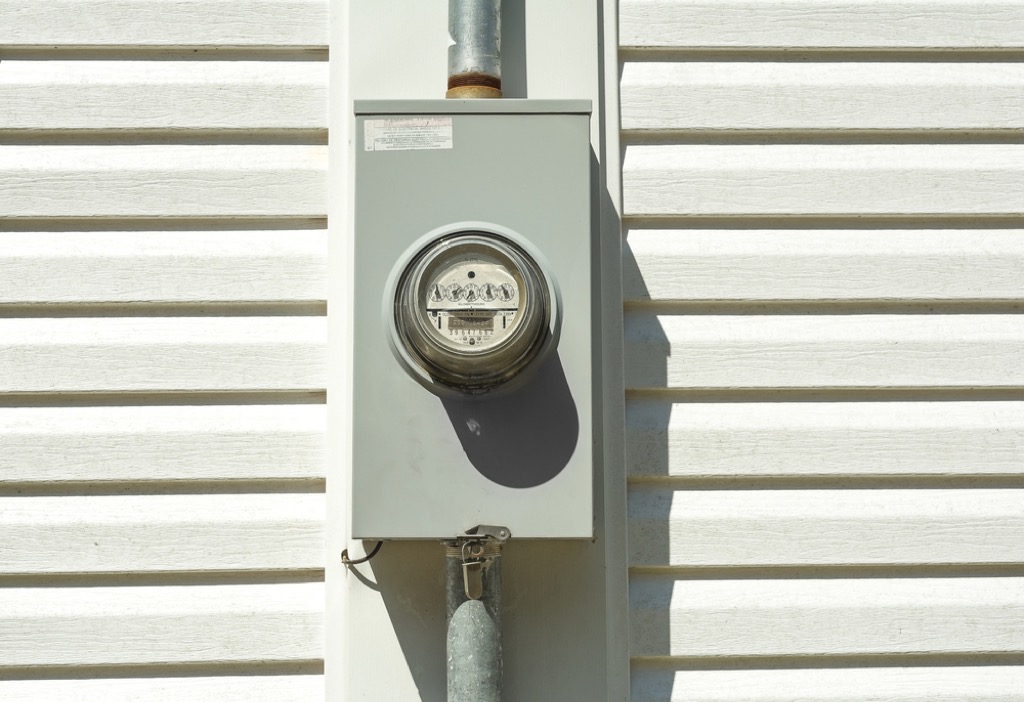
If your electrical bill is draining your wallet more than usual, don’t just call your utility company—call a roofer, too.
Soaring electrical bills, especially when coupled with hot and cold spots inside your home, are “a clear indication that your roof is damaged and does not provide enough ventilation,” says Brandon. Unfortunately, this may lead to even bigger issues down the line, including serious interior leaks and mold growth, he explains. And if you want to keep your home safe, make sure you know these 17 Ways You’re Ruining Your House, According to Electricians.
3
Your air conditioner’s backup drain pipe is leaking.

That drip from your AC system’s secondary drain pipe isn’t a problem you can safely turn a blind eye to.
A dripping secondary drain means the primary drain is clogged, explains Chris Forbus, owner of Choice Air Care. “The secondary drain is just a backup, so if it also gets clogged, the pan will overflow, leaking down into the house,” he says. This can quickly cause water damage and mold to develop if it’s not dealt with immediately. Don’t have AC at home? Check out these 15 Ways to Keep Your Home Cool Without Central Air.
4
You have mildew near your water pipes.

Finding mold or mildew around your pipes may mean a major repair is in your future.
“Mold growth can point towards a water leak due to a faulty water pipe or water line within the surrounding area,” explains mold remediation expert, Andrew James, owner of Indianapolis Restoration Pros. James says that mold feeds off of water leaks, so that the longer the leak goes untreated, the more remediation you have in your future.
5
Your water meter runs even when the water is turned off.

If you’ve turned off your water valve but still see your water meter running, “that means that you have a plumbing leak or something is wrong with your toilet,” says Florida-based plumber, Ryan Thompson.
Not only will this make your water bill more expensive than it should be, but it also makes your home more likely to develop mold and have structural rot issues over time.
6
Your hot water is running cold.

A cold shower may be refreshing on a hot day, but if your hot water tap isn’t working at all, it’s time to call a plumber.
Thompson says that this could be a sign that your water heater is malfunctioning, meaning a costly repair could be in your future. “You will want to get a quick check on it if that’s the case since water heaters tend to last longer if you get professionals to perform routine maintenance,” he says.
7
Your floorboards are warped.

A shoddy installation could be the source of your warping floorboards, but don’t rule out the possibility of a more serious structural issue being at play.
“Moisture hidden in the soil beneath your ground level will wreak havoc on finishes and structure,” including floorboards, says Colin Haentjens, a licensed architect and designer with The Knobs Company. If you notice your floors starting to warp, Haentjens recommends having a contractor come inspect your home before any structural damage gets worse.
8
Your roof is covered in moss.

Moss growing on your roof is an indicator of moisture infiltration and “will eventually lead to water damage in your home or, even worse, a collapsed roof,” says Kershan Bulsara, owner and manager of Roofmaster.
9
You experience eye and nose irritation.

Sometimes, the signs something’s wrong with your home aren’t as obvious as faulty electrical sockets. In fact, showing symptoms of a respiratory issue could be a sign you’ve got a leak somewhere in your home.
Once a leak has spurred mold growth, “This leads to a significant decrease in the quality of your indoor air, causing sinus and eye irritation,” says Bulsara.
10
Your drain keeps backing up.

Regular drain back-ups are frequently an indication of a blockage in your pipes, explains Chris Manariti, director of Manariti Plumbing. In addition to decreasing the water pressure throughout your home, “the problem could worsen, causing gurgling noises, [and] water and sewage backing up through other drains,” he says. If you want to avoid a major repair in your future, make sure you know these 21 Ways You’re Damaging Your Home, According to Your Plumber.
11
Your doors don’t close properly.
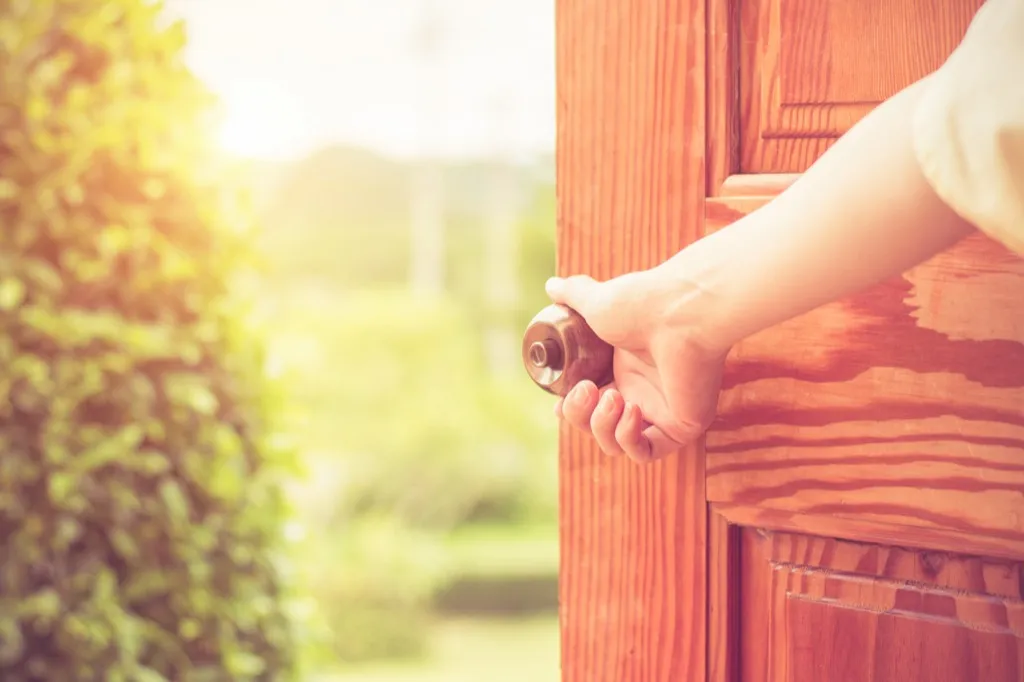
If your doors aren’t shutting properly or are getting stuck more frequently than you’d like, don’t blame your contractor—blame your foundation, says Corey Fager, owner of real estate solutions company, Buying Houses: Nashville.
“You’ll want to determine if your foundation is finished settling or if there are active shifts in the soil,” he says. “A sign of active settling or foundation shifts are new cracks in the drywall or ceiling.” And and if those cracks are getting larger and harder to close, Fager says it’s time to call a foundation company.
12
Your windows won’t open.

Similarly, if your windows are consistently getting stuck shut, the issue may be more than just ill-fitting panes.
“If the windows don’t open, it can mean warped window frames and/or home settling, which can be expensive to fix,” says real estate investor, Brian Davis, co-founder at SparkRental.com.
13
Your toilet is wobbly.

Feel like you’re doing a balancing act every time you go to use the bathroom? Well, that moving target of a toilet is no laughing matter. “A wobbly toilet or sponginess in any floor can indicate rotting sub-flooring, another expensive repair, depending on the extent of the rot,” Davis says.
14
Your floorboards feel bouncy.

Having a spring in your step can be a positive thing—unless it’s your floorboards giving you that trampoline-like lift. “When you are walking in a home and the floor has a bit of bounce or give, it may indicate foundation issues,” says Nathan Outlaw, president of Onvico, a design-build firm.
However, it may be more than just your foundation that needs help. “In more extreme cases, this can mean whole beams are rotten and need replacement,” says Outlaw.
15
Your yard has a serious slope to it.

It’s not always the interior condition of your home that indicates trouble—even your yard can show that you have serious foundation issues.
“If the land looks like it slopes toward the home, this may indicate water is getting under the foundation,” says Outlaw, who recommends looking under your crawlspace to see if there’s visible moisture, as well as checking the area around your slab foundation for pooling water.
16
Your house smells musty.

If you clean your home meticulously and still smell a persistent musty odor, it’s time to call in the experts.
Unfortunately, this is a surefire sign of mold growth, which “rots wood and weakens the entire home’s infrastructure,” Brandon says. “Rotten wood is mushy and brittle and can be easily cracked.” And it’s more than just an aesthetic issue—mold can cause respiratory health problems, skin irritation, and chronic fatigue.
17
Your ceiling is discolored.

Discolored ceilings are frequently the result of water damage, which can mean major repairs are in your future. “If there are signs of water intrusion on the ceiling, it may indicate issues with the roof or HVAC leaking,” says Outlaw. “This could also mean that there is significant water damage to sheetrock, sheathing, or other areas that are hidden from the living area.”
18
Your molding is uneven.

Crown molding can add some old-fashioned style to any home, but if those pieces don’t line up seamlessly, you could have serious—and potentially-costly—issues to contend with. Uneven moldings can be an indication of foundation issues or may signal that you have water damage behind your walls, causing the molding to become soft and droop.
19
Your house is always humid.

Even if you enjoy keeping your home warm, it shouldn’t be unseasonably humid indoors no matter what. Indoor humidity, especially if the problem persists year-round, can be a sign that you’ve got water damage.
20
Your home is hot—even with the AC on.

Experiencing tropical temperatures even with your air conditioning going full blast? It’s time to call an HVAC tech ASAP.
“A lot of window companies like to talk about old windows as the culprit, but often the issue is not enough—or none at all—insulation in the ceiling and attic,” says Fager. “I inspect a lot of houses and you’d be surprised how many have little to no insulation. Another issue could be inadequate attic ventilation.”
Fortunately, Fager says there’s a relatively simple solution: “You can have a thermostat-controlled power vent installed in the attic to keep it, and your house, cooler.”
21
Your lights are flickering.
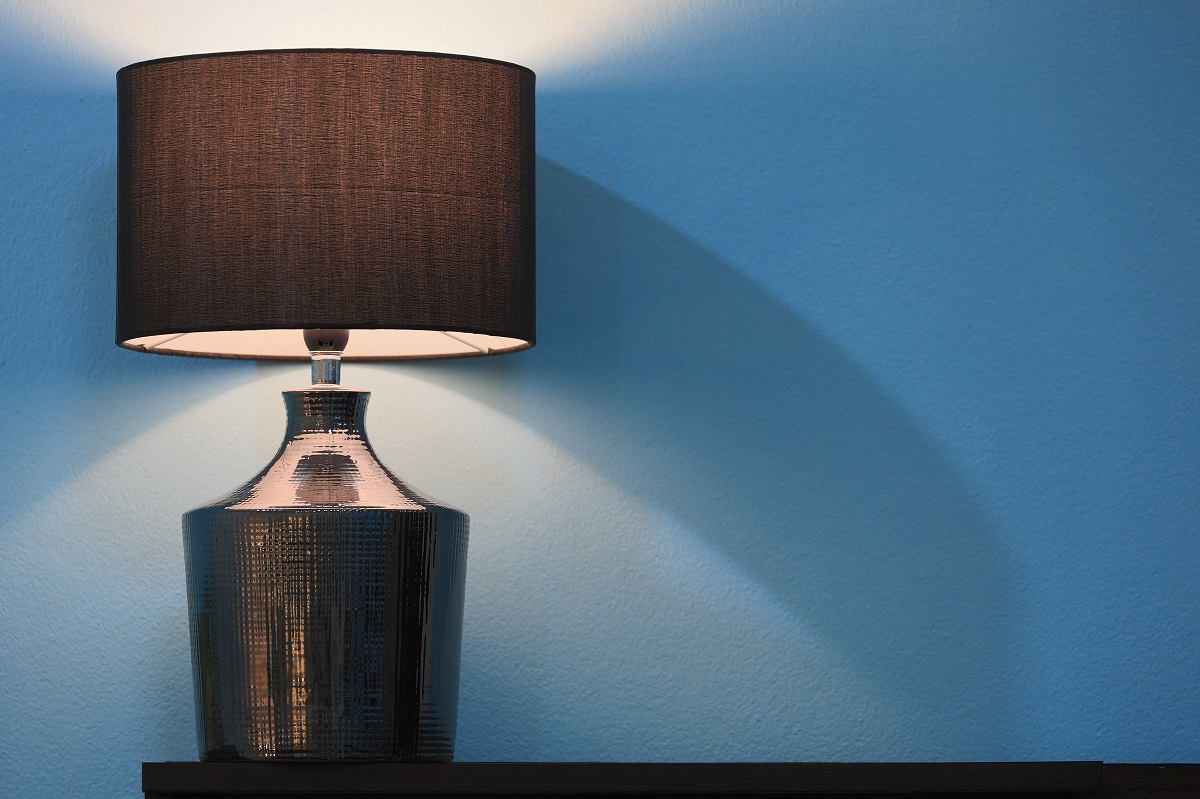
While storms can cause your lights to temporarily dim, if you find that your lights are flickering with no apparent cause, your electrical system could be to blame. Loose electrical connections are a major cause of flickering lights and may increase your risk of a house fire if not secured.
22
You have ants in your kitchen.

Virtually every home in the world sees a bug or two make their way inside. But persistent pestilence could be a sign something’s seriously amiss.
“Your windows may not have sufficient foam or caulking around them, which is an easy pathway for bugs to find their way to your kitchen,” says Fager. “Sometimes trim needs to be removed to expose these holes, and sometimes you can simply caulk around the cracks, both on the interior and exterior.”
23
Your pipes make banging noises.
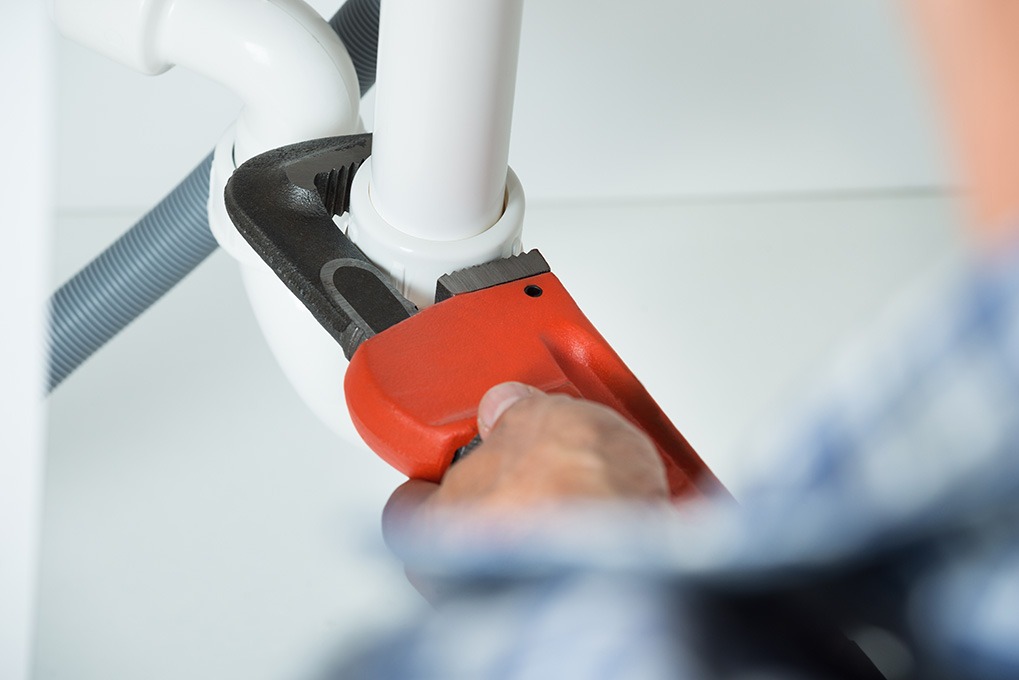
While even properly-installed plumbing isn’t universally silent, if you notice that there’s a cacophony of noises behind your walls every time you wash your hands or take a shower, your pipes may need reinforcement.
“When you shut the water off, the pipes bang because they’re not secured properly in the walls,” says Rick Ingersoll, owner of New York-based, Thomas Harkins Plumbing and Heating.
24
Your house smells of smoke.

If you’ve scrubbed every inch of your home and it still smells like stale cigarettes, the problem is likely more severe than meets the eye.
“Whether you bought the house with the smoke smell or smoked in it yourself, smoke can penetrate deeper than you might think,” says Fager. “In addition to walls, ceilings, window treatments, and floors, smoke can soak into carpet padding, ductwork, insulation, studs, and even the dirt in your crawlspace,” leading to third-hand smoke exposure, a potential health hazard.
25
Your countertops are cracked.

If you installed pricey granite or marble counters only to find them cracked after just a few years of use, that can often be a sign of a shifting floor resulting from foundation issues, which may require a costly fix.
26
Your new home only has one freshly-painted room.

Be wary of houses with a single freshly-painted room or wall. “A new paint job in a single room or wall could be a sign that something is amiss underneath, so ask the selling agent,” says Dan Meyer, co-founder and CEO of Pocketdoor, a company that provides consumers information on renovations and other home projects. “There may be a good reason for the fresh paint, but now is your chance to ask.”
27
You have grease on your kitchen cabinets or walls.

That greasy film covering the counters, walls, or cabinets in your kitchen isn’t just a sign that you need to be tidier when you’re cooking. When your range hood, which is designed to pull grease particles from the air, isn’t working properly, it may lead to a build-up of those particles on the surfaces around your home, especially in the kitchen where they originated.
28
You have a hard time plugging in your electronics.

Ever feel like you’re playing a game of Operation trying to plug something into your wall outlets? If so, it’s time to call an electrician. Difficulty plugging your electronics into your outlets could be a sign that your wiring is loose, which can increase your risk of an electrical fire.
29
Your paint has bubbles in it.

Bubbling paint doesn’t mean that you’re not quite as handy with a paintbrush as you thought. “If you see what looks like large popped, paint bubbles on the wall surface or chipping paint, it may be a sign that the outside of the wall is not properly protected from water intrusion,” says Robert Taylor, also known as The Real Estate Solutions Guy. And if moisture’s not to blame, you might want to have an exterminator drop by—termite infestations often cause similar issues.
30
Your drywall seems to have been repaired multiple times.

While you might think it’s a good sign that your home’s previous inhabitants were diligent about repairing their drywall, the fact that they needed to do so may indicate some serious problems with the house.
“If you see new cracks in the sheetrock or stucco that appear to have been previously fixed, the house may have structural or foundation issues,” Taylor says.
31
Your chimney is turning white.
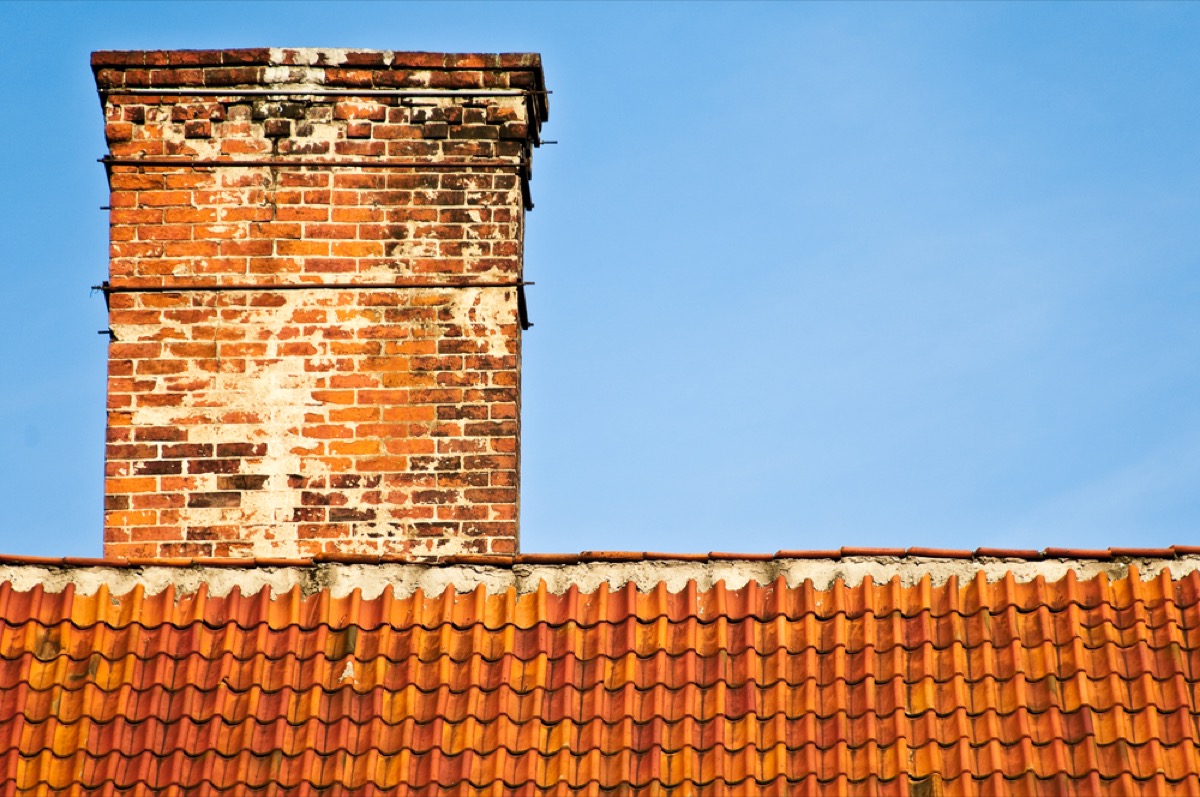
That white build-up on the outside of your chimney—also known as efflorescence—may be a sign of normal wear and tear, but if those white spots keep growing, something is wrong with your home. That white coloring may be an indication that you have a serious moisture problem in your chimney system, potentially due to cracks in your bricks or mortar, or an improperly-placed or damaged liner.
32
Your deck is damp underneath.
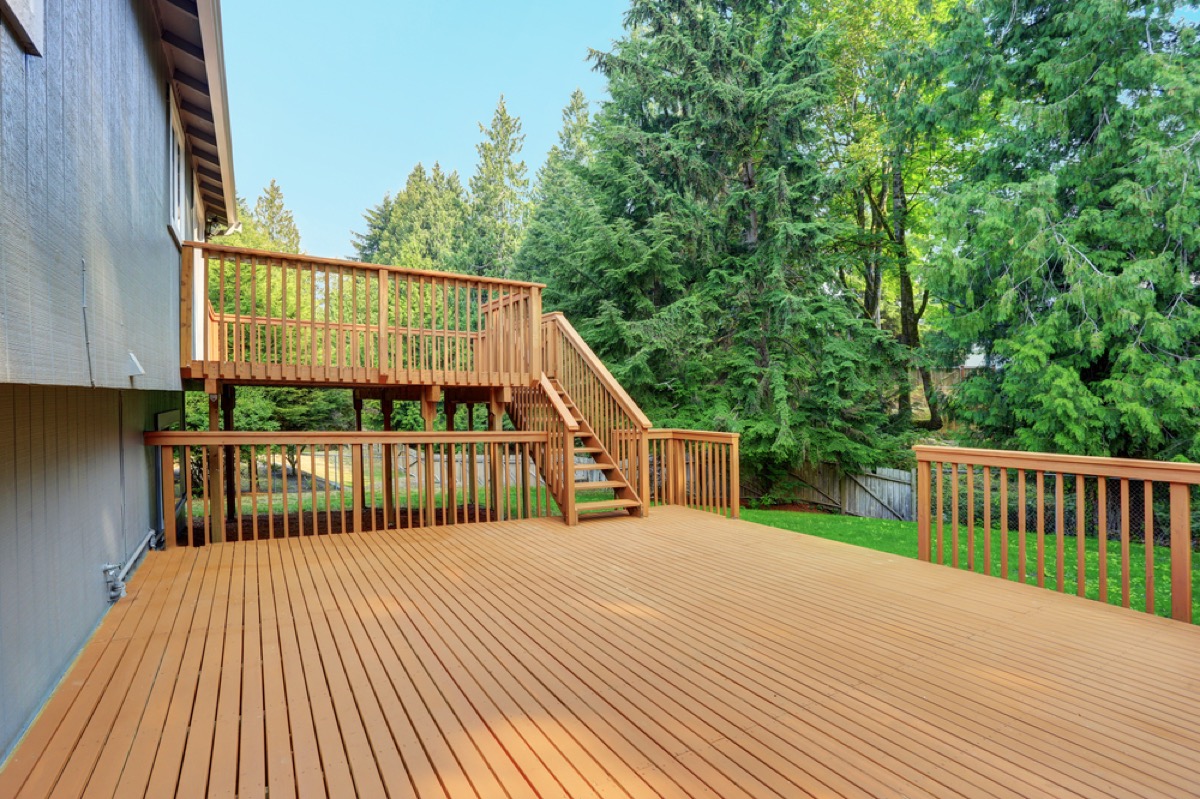
If the area under your deck is as damp as a steam room, you may have serious—and costly—repairs ahead of you. Moisture under your deck can mean your house or decking has insufficient drainage or ventilation, which can lead to mold or rot over time.
33
Your floors have a significant slope.
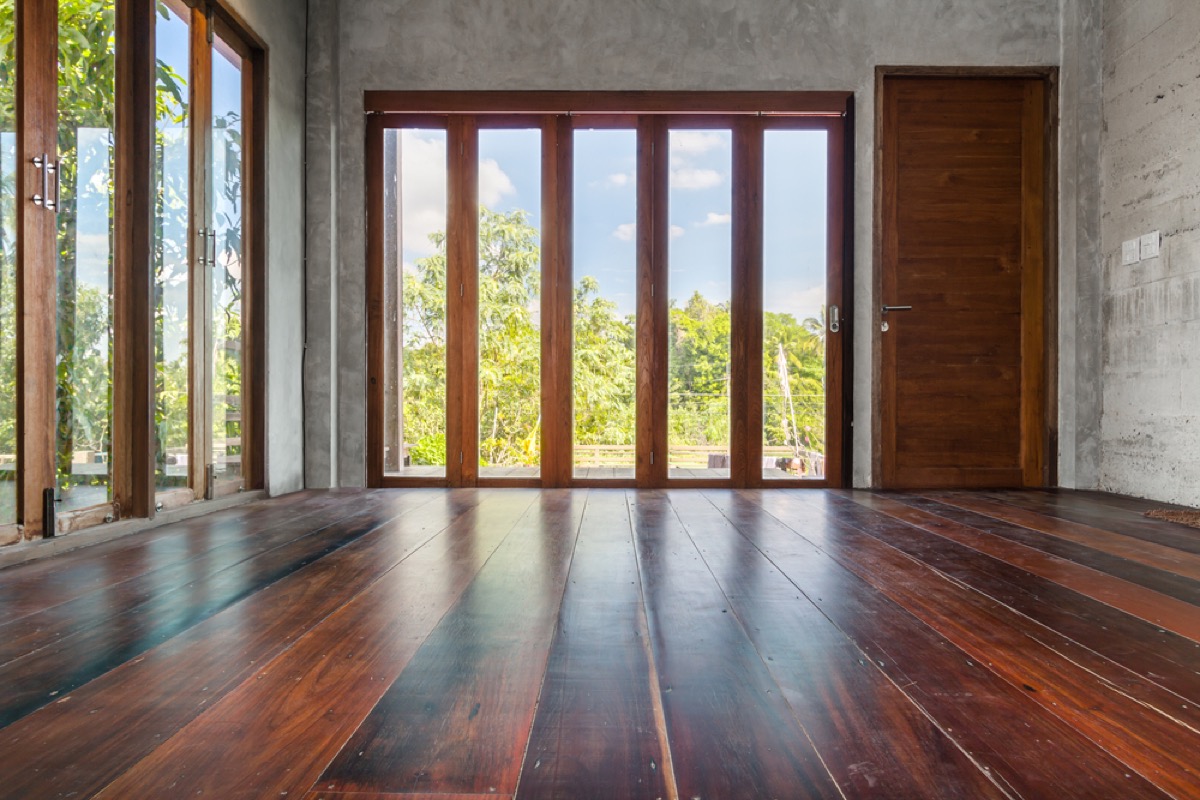
While the settling of an older home may lead to some variation in its flooring, if you could downhill ski from one side of your home to the other, that’s an issue that needs attending to ASAP.
“Floors that have ‘whooptidoos,’ or up and down hilly floors, are often a sign of floor piers placed too far apart,” says house-flipper and realtor, Jodi Moody, of Smoky Mountain Realty. “Back when codes didn’t exist, floor beams and piers were put further apart to save money and wavy floors are a sure sign a building is not properly supported.”
34
Your washing machine hose looks lumpy.

If your washing machine hose looks lumpy, it’s time to get a plumber to your house as soon as you can. Bulges in your machine’s hose can mean that the hose’s walls have weakened, meaning it could burst and cause a flood if it’s not fixed in a timely manner.
35
Your roof cap is out of place.
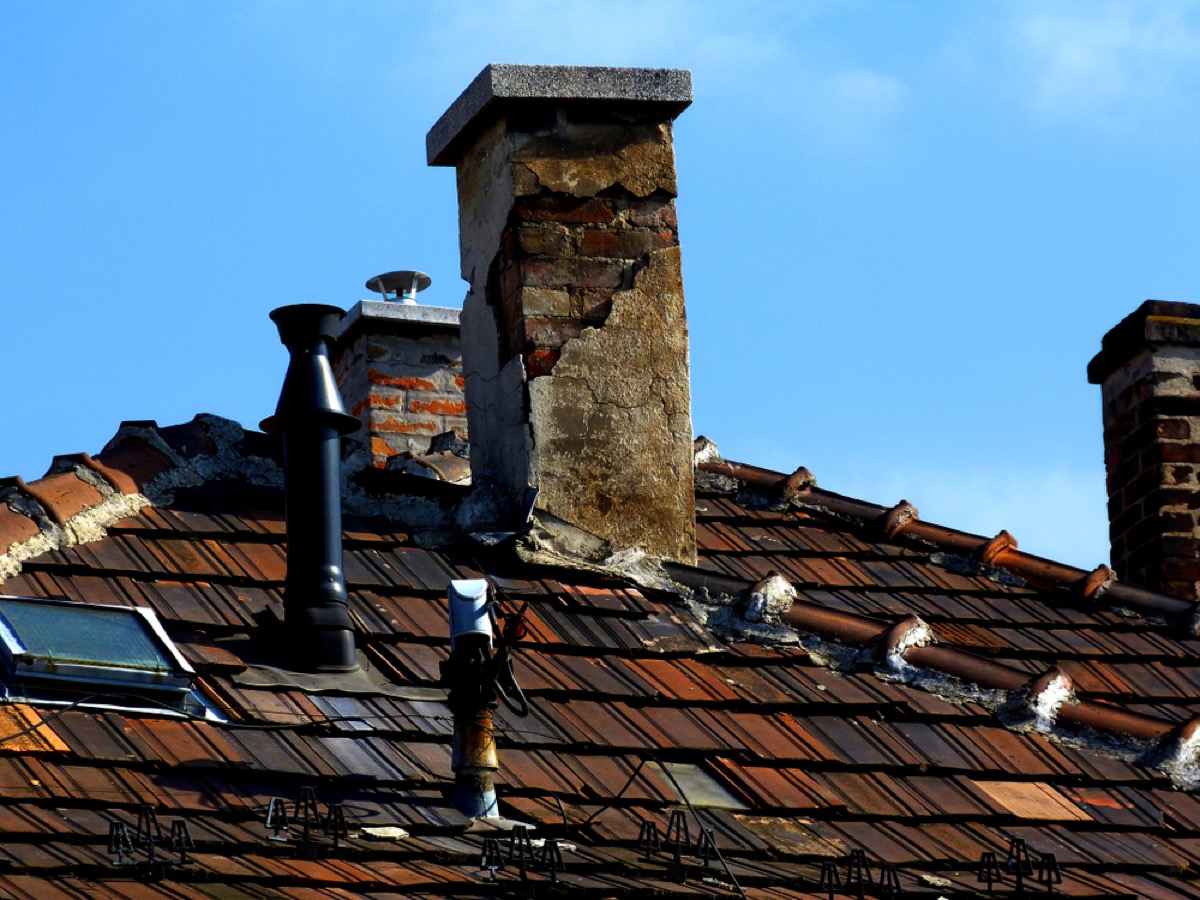
The cap on your roof serves an important purpose: to ventilate your home and help you maintain a more comfortable interior temperature. However, if your roof cap has moved from its original position or looks lopsided, that’s a sure sign your shingles have shifted, meaning there’s either a problem with the roof itself, or a possible foundation issue.
36
Your walls have cracks in the corner.

Whether you have drywall or plaster walls, small cracks can appear over time in even the most well-built homes. That said, if cracks are specifically showing up in the corners of your rooms, it might be time to call in the pros.
“If you have random cracks in the walls, it’s a sign that your framing lumber could be shrinking,” says real estate expert Shawn Breyer, owner of Breyer Home Buyers, who explains that moisture losses in the lumber used to build your home can cause it to shrink and change shape, leading to those cracks.
37
Your outlets feel warm.
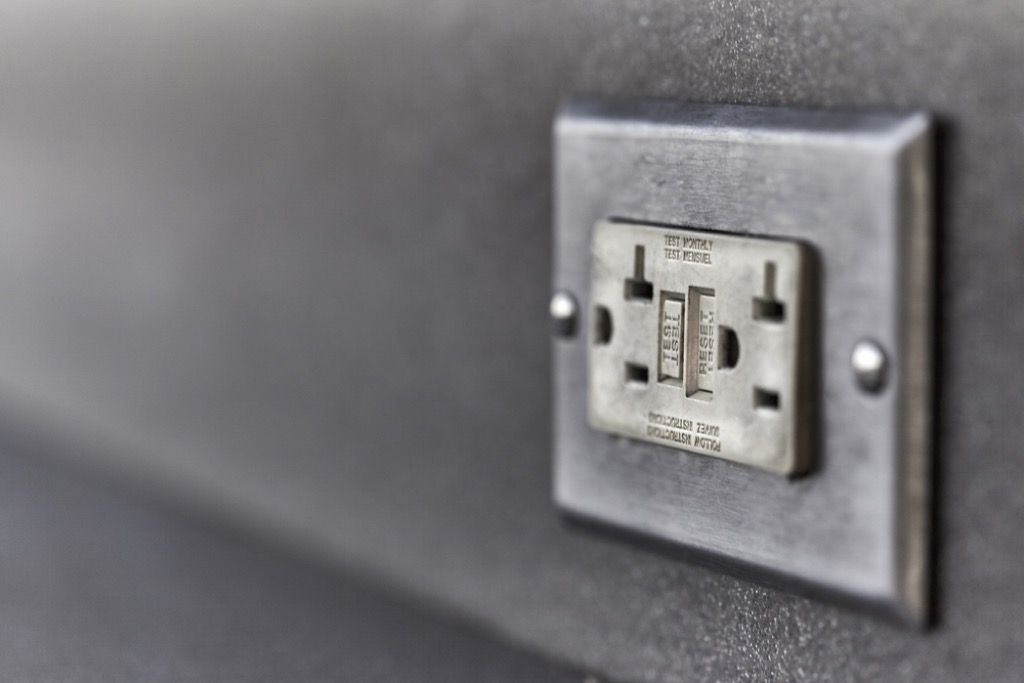
Warm outlets could be a sign there’s a problem with your electrical system. Whether it’s due to faulty wiring or you’re putting too much demand on your electrical system, this home problem isn’t one that you can afford to wait on and demands a visit from an electrician ASAP before it puts your home at risk for a fire.
38
You have virtually no water pressure in your showers or sinks.

Low water pressure isn’t just annoying—it’s a sign there’s a potentially-serious problem with your house. Low water pressure can be the result of a leak or a clog in your plumbing system, or that your pipes are too small to deliver the amount of water you’re demanding from them, potentially setting you up for a burst pipe or flood.
39
You find puddles in your basement.

Those wet spots on the floor of your basement mean it’s time to call in a structural engineer or contractor. Pooling water in your basement is often an indication that you have leaks in the foundation of your home. “These leaks can wreak havoc on the structure of your home, which could result in the need for costly repairs,” says Chuck Naish, founder of City Residential Foundation Repair.
40
You’re getting regular static shocks.

While some static shocks could be the result of dry air and the friction of your feet on the carpet, if you’re only getting them while touching an electrical outlet or light switch, there’s a bigger problem at play. Getting shocked when you touch an outlet may mean that your outlet isn’t properly grounded, probably because your wiring is older and needs an update, or has come loose.